#cleanwater
Text

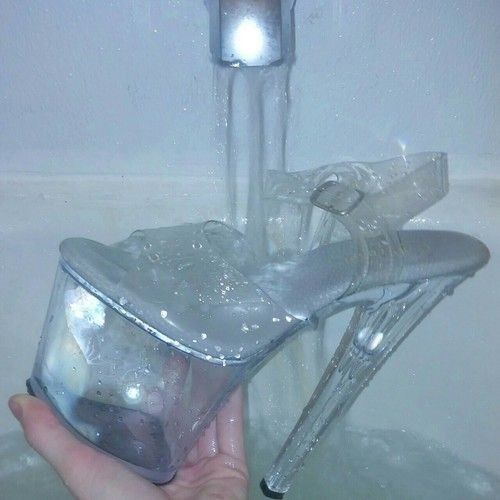







⚄ ⚄ ⚄ ⚄ ⚄ ⚄ ⚄ ⚄ ⚄ ⚄ ⚄ ⚄ ⚄ ⚄
𐰢𐰢𐰢 traded all my technology for an⎙ afternoon with Socrates.
ᨏᨏᨏᨏᨏᨏᨏᨏ﹅𖦹
#aesthectic#messy layouts#art#cleaning#sprays#cybercore#dividers gif#dividers#cleanwater#digitaldesign#intel core#skeuomorphic#glossy#texture#natural#futurism#aesthetic icons#aesthetic#blue aesthetic
106 notes
·
View notes
Text

POW 💥
#illestdjalive#pow#beetsandboutiques#dawoduinc#bodybydawodu#cleanwater#9ja#abracadabra#gotem#legendary
2 notes
·
View notes
Text
Cities across Michigan Focus on Protecting Drinking Water Sources
As part of Source Water Protection Week, (September 24-30) the Michigan Department of Environment, Great Lakes, and Energy (EGLE) is highlighting the efforts of the cities of Gladwin and Harrison to educate students and other about the importance of protecting drinking water sources, with the help of EGLE grants.
Students and others in Gladwin and Harrison are learning about the importance of protecting drinking water – and that means protecting water at its source. Source water includes surface water or groundwater that is used currently – or potentially in the future -- for drinking water.
Gladwin
With the help of an EGLE grant, the City of Gladwin held a banner contest with Gladwin Public Schools, open to K-12 students. The city displayed banners designed by the winners throughout the city, and recognized the winners and gave them source water protection t-shirts.
Also visible around the city are three signs that include information on the water cycle and fun facts on drinking water protection. The signs drive home the message that whatever is dumped on the ground will enter the water cycle.
The City of Gladwin also included participation in the Michigan Wellhead Protection Program in its Consumer Confidence Report that was included in the city’s spring/summer newsletter sent to all residents. The newsletter also included an advertisement for the city’s annual household hazardous waste collection day.
Harrison
The City of Harrison teamed up with the Michigan Rural Water Association to do groundwater model presentations with Harrison Middle School students. Some 101 students saw a demonstration of the groundwater model; made edible “aqui-flurries,” (a fun way to understand the geology of an aquifer); and took a field trip to the well house, water tower, and wastewater lagoons. They learned about the importance of water, groundwater specifics and ways to protect water sources.
The city also hosted a calendar contest with 5th grade students and a t-shirt design contest with 6th through 8th grade students.
Source Water Protection Week focuses on taking a proactive approach to safeguard, maintain or improve the quality and/or the quantity of drinking water sources and their contributing areas. It encourages people to:
Recognize water as a precious resource.
Help conserve the watersheds that are the source of our water.
Protect our shared water resources from pollution.
Practice water conservation.
Become involved in local water issues, and
Plan to protect water for future community health and economic vitality.
Click here to learn more about Source Water Protection Week.
Source: EGLE Newsroom


2 notes
·
View notes
Text
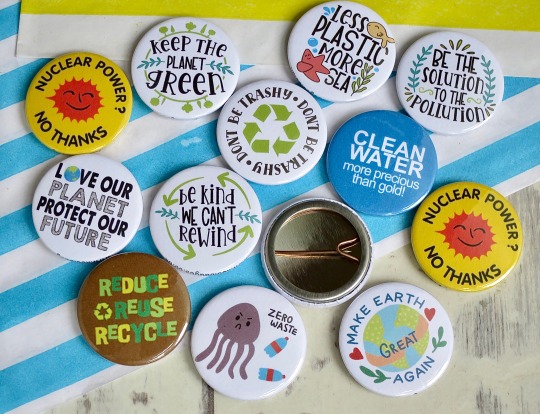
🌍 🌊 ♻️ ECO & Green themed badges >> available to buy in our online shop.
#eco#begreen#noplanetb#savetheplanet#cleanwater#badges#ukhandmade#badgemaker#shopsmall#recycle#craft#bbloggers#25mm#badge#buttons#handmade#koolbadges#pins#green party#climate change#climate emergency#climate action#climate crisis#climate and environment#global warming#environment#be more green#go green#protect our planet#planet
4 notes
·
View notes
Text
#EffluentTreatmentPlant#ETP#Sustainability#EnvironmentalSolutions#Bangladesh#WaterTreatment#IndustrialSolutions#CleanWater#WastewaterManagement#GreenTechnology#BestSupplier#EnvironmentalImpact#EcoFriendly#Innovation#GreenBangladesh
2 notes
·
View notes
Text

3 notes
·
View notes
Text

#aesthetic#artgallery#beach#ocean#sea#whitesand#bluesky#cleanwater#photography#photooftheday#trending#mood#vibes#chills#tumblr#insta#instagood#inspo#instadaily#instalike#instamood#instagram#glam#boujee#art#sky#views#expensivetaste#finerthings
4 notes
·
View notes
Text
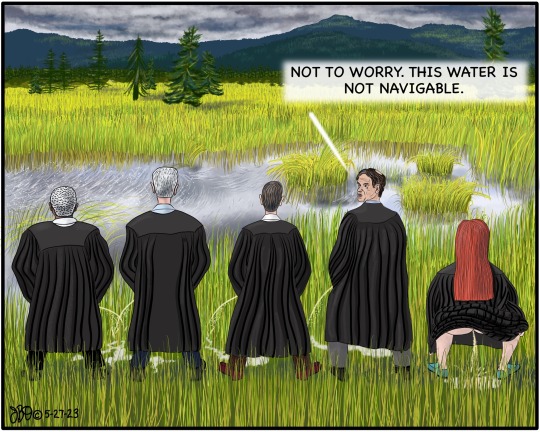
Sackett v. EPA
#political satire#editorial cartoons#politics#political cartoon#scotus#us supreme court#wetlands#epa#enviromental#cleanwater#clean water act#republican
3 notes
·
View notes
Text

Salvador,Bahía 9.00am
"A land like this is not seen around..."
5 notes
·
View notes
Text

Source: Brooke Hampton of Barefoot Five
#EscapeTheNoise#CleanAir#CleanWater#SimpleLife#CabinLife#Stillness#NatureGetaway#NaturalBeauty#MagicOfNature#AppreciateTheLittleThings#BackToBasics#SimplifyLife#UnplugAndRecharge#NatureTherapy#EcoTherapy#OutdoorLife#FreshAirAndSunshine#ForestBathing#MountainEscape#Riverside#NatureLover#WildernessCulture#AdventureTime#ExploreTheOutdoors#FindYourWild#TheGreatOutdoors#AppreciateNature#NatureAppreciation#NatureIsMedicine#PeaceAndQuiet
4 notes
·
View notes
Text



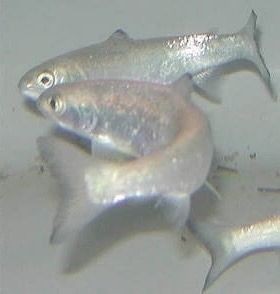





⚬ 𔔀 𓇼 𓆉 ⬦𐂂 ⛓❐ ⎗ 𓊘 ⍝ 𓍲 ˖ 𓊿
─̸─̸─̸─̸─̸─̸─̸─̸─̸─̸─̸─̸─̸─̸─̸─̸─̸
#blue aesthetic#blue white#aesthectic#messy layouts#art#dividers#soft icons#cyberspace#cleanwater#cleancore#aesthetic icons#white aesthetic#cutecore
29 notes
·
View notes
Text

Are you watching closely 🪄
#illestdjalive#pow#beetsandboutiques#dawoduinc#bodybydawodu#cleanwater#9ja#abracadabra#gotem#legendary
2 notes
·
View notes
Text
Road salt, a stealthy pollutant, is damaging Michigan waters
In a dim hangar outside of Traverse City, towering piles of white crystals cast a glow in the twilight.
Salts like those stored at the Grand Traverse County Road Commission maintenance facility keep Michigan roads, parking lots, and sidewalks clear of ice in the winter, a prudent safety measure for motorists and pedestrians. The mobility benefits of salt for a car-centric society, though, have an undesirable environmental side effect that has built up over decades of use: extensive damage to ecosystems and infrastructure.
Chloride -- the catch-all term for salts -- does not discriminate. It hurts mayflies and freshwater mussels, taking out species at the base of the freshwater food chain. It acts as a chemical instigator, loosening metals and nutrients that are otherwise bound in sediment and freeing them to flow downstream, thus feeding toxic algae in troubled places like Lake Erie. As with sun on skin, excess salt accelerates infrastructure aging. The metals and concrete in bridges, roads, and cars deteriorate faster when exposed to salts.
The state issued its first water quality standards for chloride in 2019. Not written with infrastructure in mind, the standards are intended to protect fish, insects, and other freshwater species. But the state has not yet translated those standards into a plan for limiting chloride in the eight stream sections that already exceed the limit.
Developing those pollution diets takes years. In the interim, state regulators this year are directly asking municipalities with storm sewer systems to outline steps for controlling salt runoff from roads. Roads, however, are only part of the problem. Salt applied to parking lots and sidewalks also enters streams and groundwater. But regulators say that municipalities do not have the staff or budgets to oversee salt application on private property. In part, this is a consequence of state court rulings that have deterred cities from creating agencies to manage pollutants that are flushed from paved surfaces.
The best way to deal with salt pollution is to bar it entry -- not to allow it in the water in the first place. By and large, that outcome will rely on the widespread and voluntary adoption of salt-reducing practices by road agencies, shopping mall owners, apartment complex managers, and homeowners. Reducing salt use also hinges on societal shifts: public acceptance in urban areas of slower winter driving speeds and less driving in hazardous weather.
“You can think of chloride as a permanent pollutant in the water,” said Christe Alwin of the Michigan Department of Environment, Great Lakes, and Energy. “Once it’s there, there’s very little opportunity to treat it.”

(Photo © J. Carl Ganter/Circle of Blue)
Last year marked the 50th anniversary of the Clean Water Act, the landmark federal law that intended to give new life to waterways that were fouled by all manner of chemical and bacterial pollutants. The goal was to make rivers and lakes fishable and swimmable once again. The law, part of a package of national environmental reforms in the early 1970s, was transformative. By mandating pollution controls on wastewater treatment plants and industrial facilities, it marked a new era of environmental stewardship -- an era in which rivers and lakes were viewed not as dumping grounds but as civic assets that fostered recreation, ecological rebirth, and economic development.
Despite undeniable progress, substantial impediments to clean water remain. The law did little to stanch the flow of dispersed pollution that comes from roads, lawns, and farms. More waters today are fishable and swimmable, particularly in major metropolitan regions. But many, especially streams and rivers that drain agricultural regions, still are not. The consequences are measured in toxic algal bloom dead zones, human sickness, and the rising cost of water treatment.
Urban Areas on a High-Sodium Diet
A little salt can cause a lot of harm. The U.S. Environmental Protection Agency recommends water quality standards for rivers and lakes to prevent death and damage to fish, mussels, insects, and other aquatic species. For chloride, the EPA determined the threshold at which long-term damage could occur to be 230 milligrams per liter. That equals about one teaspoon of salt in five gallons of water.
Michigan has been slow to react to the salinization of its fresh water. The Department of Environment, Great Lakes, and Energy finalized water quality values for chloride only in 2019, three decades after the federal EPA published guidelines. Based on the numbers, EGLE determined last year that eight stream sections exceed the state threshold for chronic exposure, which is 150 milligrams per liter.
Those streams -- largely in the urban areas of southeast Michigan -- include the Shiawassee River (Genesee County), Thread Creek (Genesee County), Sashabaw Creek (Oakland County), Bishop Creek and the Upper Rouge River (Rouge River watershed), Belle River (St. Clair County), Rush Creek (Ottawa County), and County Line Drain (Arenac/Iosco County), which also exceeded the sulfate standard.
The next step for those stream sections is a regulatory tool known as a total maximum daily load, or TMDL, which caps pollution discharges. However, there is no timeline yet for developing the pollution diet for those streams, according to Kevin Goodwin, an aquatic biology specialist at EGLE.
It’s no mystery where most of the salts are coming from. Water softeners and fertilizers are sources of chloride, but the major contributor, Goodwin and others said, are the salts spread on roads, parking lots, and sidewalks to keep the pavement free from ice.
Salinization of streams is a problem across the United States, where at least 20 million tons of salt were used in 2021 for highway deicing. The U.S. Geological Survey studied 19 streams in eight states and the District of Columbia, including five Great Lakes states. The researchers found that chloride levels related to road salt increased in 84 percent of sampled streams. Increases were especially notable in urban areas with a large percentage of paved surfaces.
Those findings have been replicated at the state and local level. EGLE found chloride hot spots that align with high concentrations of highways and housing developments. The Huron River, a 900-square-mile watershed in southeast Michigan that flows through Ann Arbor, is one such area. For the last two decades the Huron River Watershed Council has tested streams for pollutants. Volunteers and staff now regularly take water samples from about 40 or 50 sites in the watershed, according to Ric Lawson, a watershed planner.
“We see that we have much higher [chloride] levels in our urban drainages,” Lawson said.
Following up on its stream samples, the Huron River Watershed Council did additional investigation at sites with abnormally high chloride levels. Were those salts coming from a particular source? Were there, as Lawson put it, any “smoking guns?”
In short, the council didn’t find any -- no leakage from a salt storage facility, no obvious surface runoff. No smoking guns. “So it does appear it’s been broad-based, long-term application,” Lawson said, referring to the salt source. “And probably, the salts moving through groundwater are how it's getting to the surface waters.”
Broad-based is the classic definition of non-point pollution. It’s the type of threat that the Clean Water Act, which focused on pollution coming from a pipe, is not at all equipped to address. The law exempts most sources of such pollution from regulation and oversight. That’s why non-point pollution is a long-term problem. Curbing it requires, in the case of salt, a voluntary change in practices.
Less Bounce, Less Scatter
Michigan’s ground transportation network is a lattice of roughly 122,000 miles of roads. To maintain these surfaces, the state’s road agencies balance three competing objectives, said Gregg Brunner, director of the Bureau of Field Services for the Michigan Department of Transportation (MDOT). Mobility, cost, and environmental protection.
Salt -- the sodium chloride form, in fact -- is the cheapest, most effective deicing agent available, Brunner said. On that measure it beats out magnesium chloride and potassium chloride.
A non-chloride option -- calcium magnesium acetate -- is on the market. But it costs about 40 times more than sodium chloride, which is mined locally, from deposits beneath Lake Erie.
The primary objective for MDOT and other road maintenance agencies is to use less of it. In pursuit of that goal, they participated in a work group to help EGLE develop salt management guidelines. Published in 2021, the guidelines are a compilation of voluntary “best management practices” that road agencies should strive to implement. The County Road Association of Michigan, which represents the 83 county road agencies, published a similar guide based on a survey of its members.
Read the complete article here
Source: Bridge Michigan
#pollution#protectourwaterways#friends of the rouge#clintonriverwatershed#huronriverwatershed#salt#calciummagnesiumacetate#protectourplanet#flintriverwatercoalition#cleanwater#environmentaleducation#pollution prevention
8 notes
·
View notes
Text

D. (43)
#wash#clean#cleanwater#postapocalyptic#bath#blood#endoftheworld#endoftheday#dusk#water#dress#no#nomercy#cleanoff#aircarrier#rusty#container#digitaldrawing#digitalart#digitalsketch#character#femalebody#womanstyle#badasswomen#scene#series#nudelip
6 notes
·
View notes
Text
Best Effluent Treatment Plant Supplier in Bangladesh
Best effluent treatment plant (ETP) supplier in Bangladesh, you want an accomplice who not just grasps the intricacies of industrial water treatment yet additionally offers dependable pollution control equipment and thorough water treatment solutions. In the domain of environmental administrations and wastewater treatment in Bangladesh, one name stands apart over the rest - our organization.

Industrial Water Treatment in Bangladesh
Bangladesh is a quickly growing industrial center, with incalculable manufacturing units and production lines spread the nation over. With industrial development comes the pressing requirement for proficient industrial water treatment solutions. Our organization represents considerable authority in providing first rate industrial ETP plant in Bangladesh.
The Importance of Industrial Water Treatment
Effective industrial water treatment is urgent in light of multiple factors:
Environmental Compliance: With increasingly stringent environmental guidelines, industries in Bangladesh should follow severe norms for wastewater release. Inability to do so can bring about heavy fines and harm to an organization's standing.
Resource Conservation: Water is a finite resource, and mindful water management is fundamental to guarantee sustainability. Our water treatment solutions point not exclusively to treat wastewater yet additionally to work with its reuse, reducing the weight on freshwater sources.
Operational Efficiency: Clean water is fundamental for the majority industrial cycles. Investing in excellent water treatment guarantees the smooth activity of manufacturing units and expands the life expectancy of equipment.

Our Industrial Water Treatment Solutions
We invest heavily in offering an extensive variety of industrial water treatment solutions customized to the particular requirements of our clients. Our administrations include:
Effluent Treatment Plant (ETP) Installation: Our ETP are intended to treat industrial wastewater, removing contaminations and ensuring compliance with environmental guidelines actually.
Turn around Assimilation (RO) Frameworks: For industries that require super unadulterated water, our RO frameworks are the ideal arrangement. They eliminate pollutions and contaminants, providing water of the greatest quality.
Chemical Dosing Frameworks: Exact chemical dosing is fundamental for viable water treatment. Our cutting edge frameworks guarantee precise dosing, enhancing treatment efficiency.
Wastewater Recycling: We have faith in sustainable practices. Our wastewater recycling solutions assist industries with reducing water utilization by treating and reusing wastewater within their cycles.
Pollution Control Equipment in Bangladesh
Pollution control is at the center of our environmental administrations in Bangladesh. We offer a thorough scope of pollution control equipment intended to moderate the effect of industrial exercises on the climate.
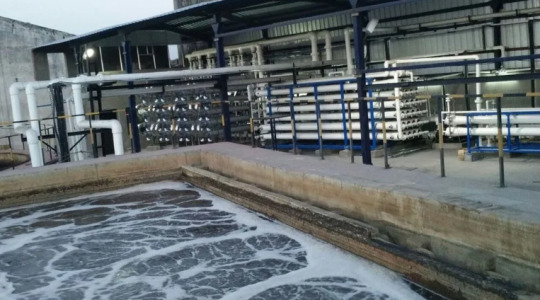
Key Pollution Control Equipment
Sack Channels: Our pack channels are exceptionally productive in capturing particulate matter from industrial emanations, ensuring cleaner air quality.
Stack Monitoring Frameworks: To follow air quality guidelines, our stack monitoring frameworks give exact information on emanations, helping industries diminish their environmental footprint.
Clamor Control Solutions: Commotion pollution can be a worry for industries. Our commotion control solutions are intended to minimize the effect of industrial clamor on surrounding networks.
Environmental Administrations in Bangladesh
Our obligation to environmental sustainability goes past water treatment and pollution control. We offer an exhaustive set-up of environmental administrations in Bangladesh, including:
Environmental Effect Appraisals: We assist industries with assessing the possible environmental effect of their activities and foster systems to minimize adverse consequences.
Environmental Reviews: Ordinary reviews guarantee compliance with environmental guidelines and distinguish regions for development in environmental practices.
Environmental Consulting: Our group of specialists gives direction on sustainable practices and assists industries with adopting environmentally agreeable cycles.

Wastewater Treatment in Bangladesh
Wastewater treatment is a basic part of our administrations. Our high level wastewater treatment advances guarantee that industries in Bangladesh can mindfully deal with their wastewater while meeting administrative necessities.
Industrial Supply Store in Bangladesh
Notwithstanding our environmental administrations, we work an industrial supply Effluent Treatment Plant in Bangladesh. Here, you can find an extensive variety of chemical plant equipment and waste management solutions to help your industrial necessities.
Chemical Plant Equipment
Our chemical plant equipment is obtained from confided in makers and is fundamental for different industrial cycles. From tanks and reactors to siphons and valves, we offer an extensive scope of equipment to meet your necessities.
Waste Management Solutions in Bangladesh
Powerful waste management is fundamental for maintaining a spotless and sustainable climate. We give waste management solutions that envelop waste assortment, recycling, and removal, ensuring that industries in Bangladesh can deal with their waste capably.
All in all, with regards to finding the best effluent treatment plant supplier in Bangladesh, look no further. Our organization succeeds in providing exhaustive industrial water treatment solutions, pollution control equipment, environmental administrations, wastewater treatment, and a scope of fundamental industrial supplies. We are focused on helping industries in Bangladesh flourish while ensuring environmental obligation.
#EffluentTreatmentPlant#ETP#Sustainability#EnvironmentalSolutions#Bangladesh#WaterTreatment#IndustrialSolutions#CleanWater#WastewaterManagement#GreenTechnology#BestSupplier#EnvironmentalImpact#EcoFriendly#Innovation#GreenBangladesh#You can mix and match these hashtags or use them individually in your LinkedIn post#depending on the context and the message you want to convey. Using relevant and trending hashtags can help increase the visibility of your
2 notes
·
View notes
Text

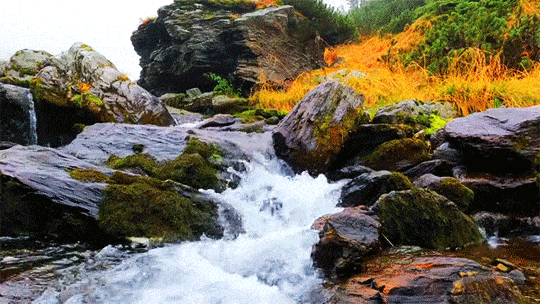



4 notes
·
View notes